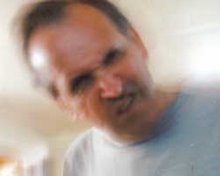Situated nearly a thousand kilometres up the Amazon, his land, Fordlandia, was a tract of hilly barren hardly fertile land covering over 10, 000 square kilometres. Talk about doing it the hard way. The town was locally called Boa Vista, or simply “Dearborn in the Jungle.” What was unique for the time was that this was going to be a rubber plantation, with managed agriculture replacing the traditional tapping of wild rubber trees.
The agreement reached gave him whacks of land, local police support and no tariffs on Ford equipment and materials entering Brazil. The Brazilians in return received a 9 per cent share of profits after a 12 year period. Things looked OK for Ford, then.
Once the first steam shovels arrived the jungle was never the same. Fordlandia became a North American suburb, complete with paved streets, bungalows, movie theatres, swimming pool and a library. Almost all of the the workers were locals and this whole world was just too weird for them.
Things don't get better. Staffed by engineers and managers who had never left an office, the rubber plantations were a mystery to them. The crappy soil eroded, or washed away during the rains causing tractors to get stuck and insane delays of equipment and supplies. To make matters even more insulting was the ensuing dry season, which lowered the river so much that boats couldn't dock. Guess they should've read the tide book.
The agricultural theories that worked in North America (closely planted rows to maximize production) only contributed to the spread of plant diseases and blights. This is the Amazon after all.
Things were not really going well so Ford traded some land for a parcel up the river a piece and started as second operation at Belterra. But big picture the whole shebang was not going to work. Fetid water contributed to malaria outbreaks and the local workers didn't get living in houses, eating in cafeterias serving unrecognizable dished like hamburgers and ice cream, or working a standard North American work day, which did not take into account the midday heat. Work stoppages were common and civil unrest became common. Ford's insistence on no smoking or drinking didn't endear him to the staff and attempts to cultural-ize the locals with poetry readings, weekend dances and English sing-alongs were just too strange. Paydays saw boatloads of local booze hit the streets and several days of low or non existent production ensued.
Fordlandia lated through the Second World War when Ford quietly paid out a quarter million dollars to the Brazilian government. His overall loss on the experiment was $20,000,000. Anyways, one of the inventions that came out of the war was synthetic rubber.





